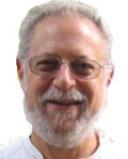Resilience
Understanding Airport Screening’s 95% Failure Rate
Why airport screening’s 95% failure rate may be the best we can hope for
Posted July 5, 2016

There has been much consternation about the Transportation Security Administration’s (TSA’s) 95% failure rate in detecting fake explosives and weapons in tests of airport security screening. Given the magnitude of the task, a more realistic reaction might be to express surprise that the failure rate isn’t even higher.
In brief, the problem stems from the probabilities involved in trying to find a needle in a haystack. Terrorists make up a vanishingly small proportion of passengers at airports. Consequently, escalations in the thoroughness or intrusiveness of screening have the primary result of escalating the number of improperly detained passengers, while having little effect on the number of terrorists caught.
For example, according to the U. S. Department of Transportation, the TSA screened “more than 653 million passengers in 2014…2,212 firearms were discovered in carry-on bags at checkpoints across the country, averaging more than six firearms per day. Of those, 1,835 (83 percent) were loaded.” There were also a small number of explosives detected (e.g., a hand grenade), though as far as I could tell from the TSA report none of the banned items was terrorism-related.
A closer examination of the numbers involved reveals the extent of the problem. To simplify the arithmetic for illustrative purposes, let us assume that 2014 was typical, and say that in that year the TSA screened 650,000,000 people and discovered 2,000 dangerous items. That is an average of one item out of every 325,000 screenings. If screeners fail to spot 95% of dangerous items then they’re catching only 5% (1/20) of them. That means that there are 40,000 dangerous items entering the screening queue and 38,000 coming out the other end undetected. Furthermore, those 40,000 items are in the possession of less than 1/100% of those screened. In other words, the TSA is hassling more than 99.99% of passengers to catch 1/20 of the dangerous items, none of which are terrorism-related.
In fact, since 9/11, there have been only two terrorist attacks on American airplanes, both Al Qaeda-related—Richard Reid, the shoe bomber, and Umar Farouk Abdulmutallab, the underpants bomber. In both cases, the flights began abroad (Paris and Amsterdam, respectively), and the men made it through airport screening but were stopped by fellow passengers.
***
In addition to the statistical deck being stacked against TSA success, there are psychological elements that contribute to the high failure rate.
TSA screeners, many of whom work part-time with no benefits, have a high-stress low-paying job that lacks many protections that other government workers have. Frustrated passengers create an unpleasant work environment for screeners, and complaints about long lines create political pressure on them to move people rapidly. As a result, there is high turnover among personnel; and the chronic stress experienced by those who remain impedes their job performance. These factors increase the likelihood that an actual terrorist will encounter an inexperienced, inattentive, or stressed-out screener who is motivated to move passengers along as quickly as possible.
***
Perhaps it is time to accept the conclusion that we cannot catch all or even most of the highly motivated terrorists. If we really want to save lives, a reasonable course of action would be to recognize that we have maxed out on security and emphasize results-oriented as opposed to public-reassuring measures.
Some people might argue that no price in dollars or loss of freedom is too high if it would prevent another airplane catastrophe. I would reformulate that objection to ask, is it really worth inconveniencing X millions of passengers to prevent 1 of 20 crashes over a period of Y years, if the same money could save a much larger number Z of lives by taking other life-saving measures instead?
(The same logic, of the near impossibility of finding a needle in a haystack, explains why it is so difficult to identify in advance lone-wolf mass murderers like Omar Mateen in Orlando. There are a very small number of such killers in a population of over 320,000,000.)
Instead of spending more on security, we would do well to devote increased resources to public health measures, such as vaccination programs and re-painting the median strips and lane separators on our roads and highways. Put another way, not spending additional funds on public health measures will cost more lives than spending the same amount on additional security measures would save.
Image Source:
Wikimedia Commons
https://commons.wikimedia.org/wiki/File:Backscatter_x-ray_image_woman.j…
Backscatter x-ray image of a woman.
(This is not the image that screeners see at the airports. The machine that took this image does not have the privacy algorithm.)
Check out my most recent book, The Myth of Race, which debunks common misconceptions, as well as my other books at http://amazon.com/Jefferson-M.-Fish/e/B001H6NFUI
The Myth of Race is available on Amazon http://amzn.to/10ykaRU and Barnes & Noble http://bit.ly/XPbB6E
Friend/Like me on Facebook: http://www.facebook.com/JeffersonFishAuthor
Follow me on Twitter: www.twitter.com/@jeffersonfish
Visit my website: www.jeffersonfish.com




